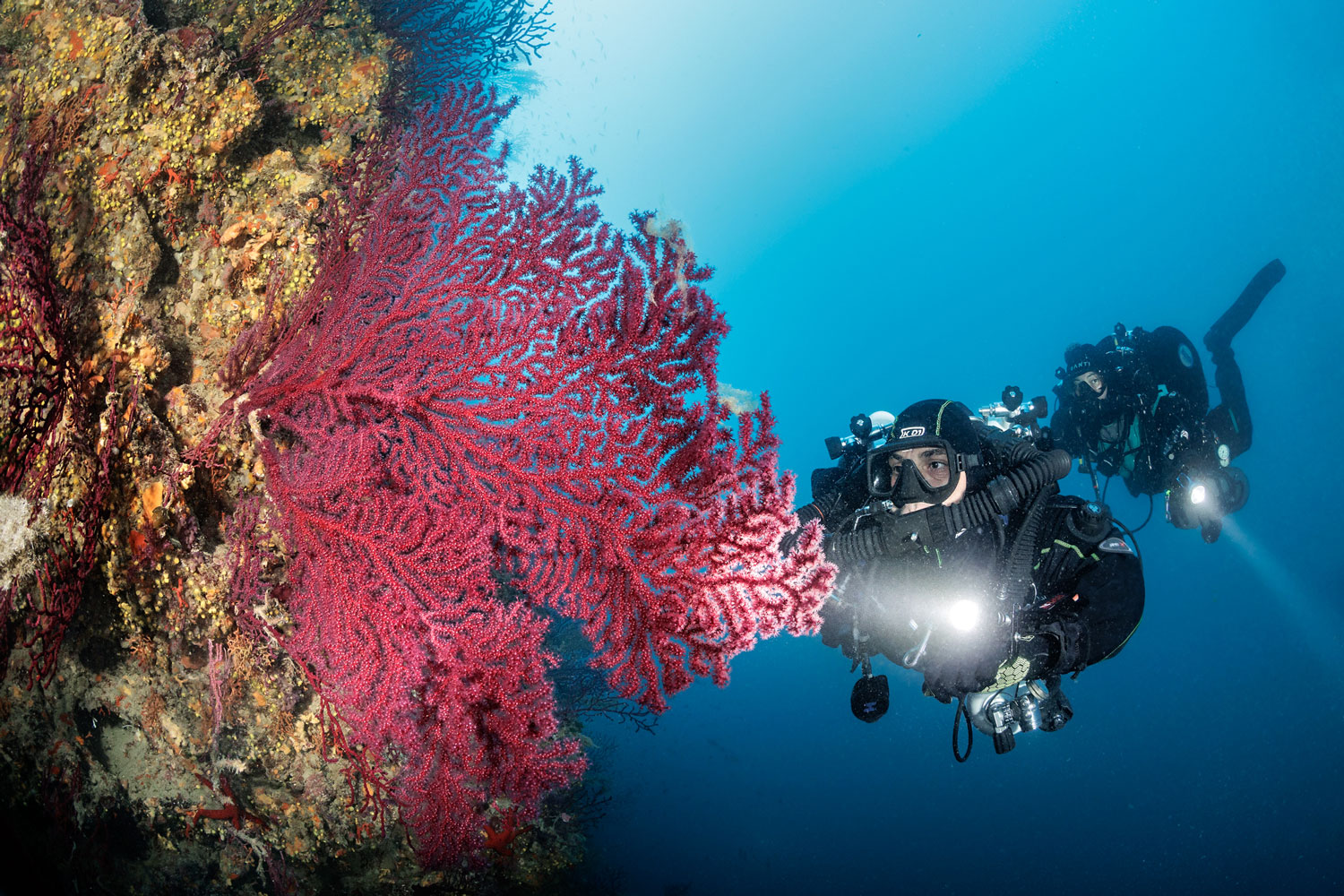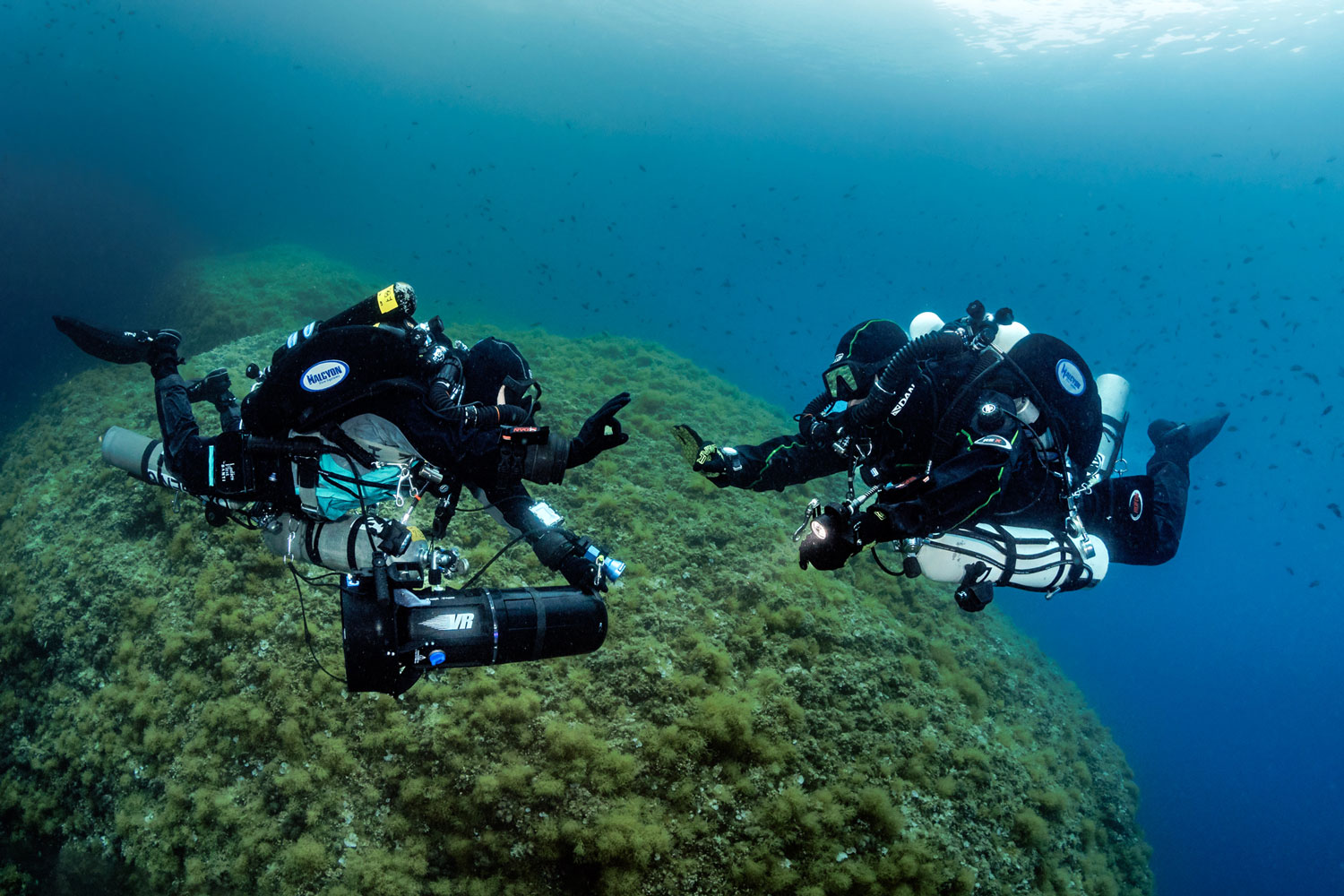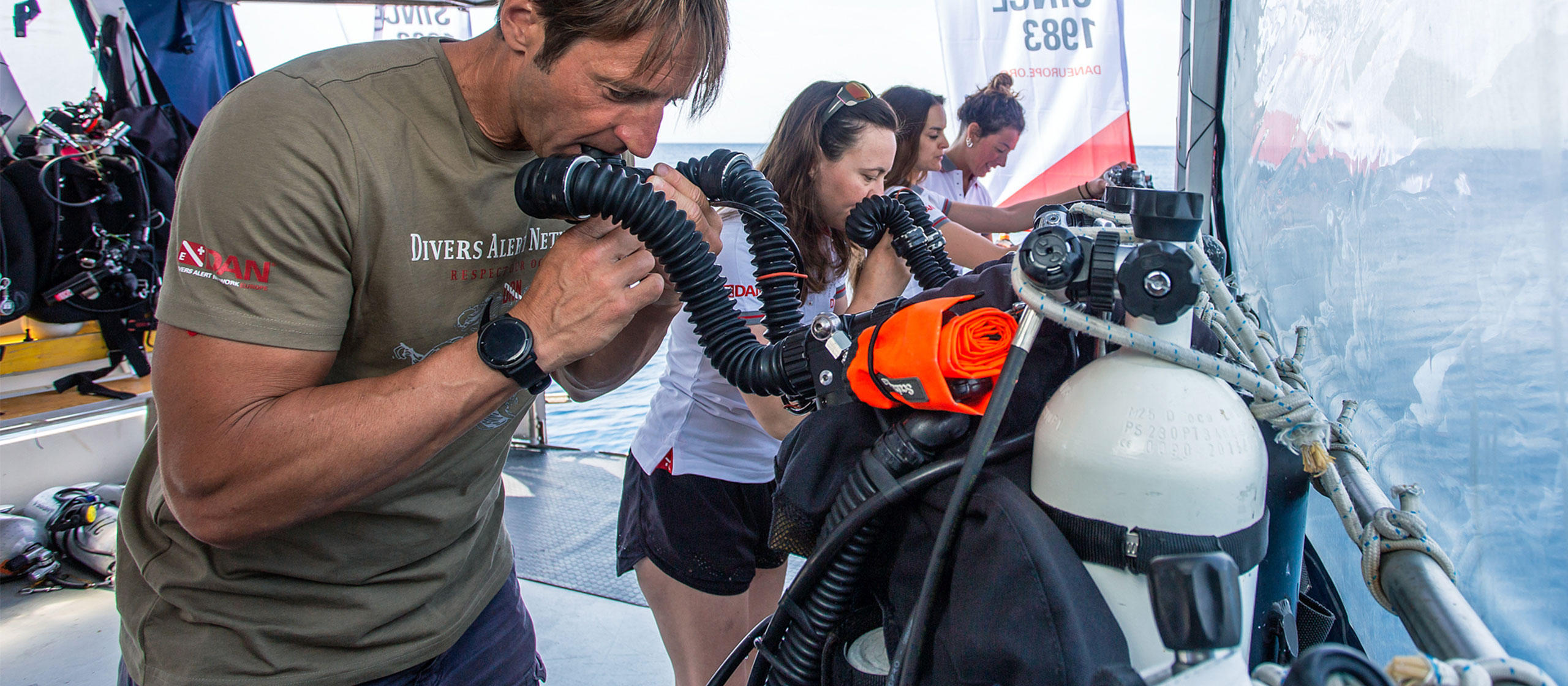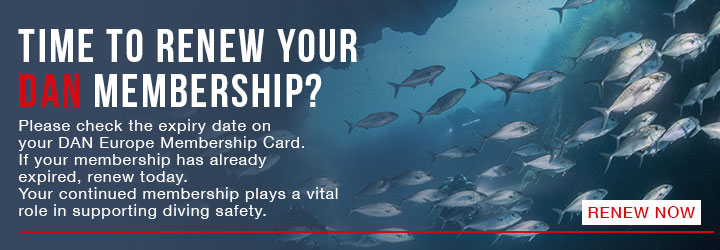Features
Are rebreathers suitable for recreational divers? Part 1
Many of the pieces of equipment used by technical divers look different to the equipment used by recreational divers. However, for most of the time, the basic principles are the same. The biggest exception to this is when technical divers use rebreathers rather than open circuit (OC). The advantages of switching to a rebreather are very clear for technical divers but what about recreational divers. A number of manufacturers have launched rebreathers aimed specifically at the recreational market and Rebreather Forum 3.0 in 2012 explicitly covered this topic. One of the consensus statements from the conference was;
The Forum recognizes and endorses the industry and training agency initiative to characterise “recreational” and “technical” streams of sport rebreather diver training. These groups will have different operational, training and equipment needs.
With the recent announcement of RF 4.0 it’s a great time to revisit this topic and see if it makes sense for recreational divers to switch to rebreathers.
A rebreather is simply a way to reuse the gas breathed out by the diver in conjunction with a method of removing the carbon dioxide produced by the diver. The main advantage of a rebreather is that it is much more efficient on gas usage. When breathing normal air at the surface, we use up about 4% of the gas we breathe in the form of oxygen needed for metabolism, and breathe out the rest of the oxygen as well as all the nitrogen.
This means that 96% of the gas we breathe escapes with each breath. At depth, this is made even worse by the fact that we are breathing gas under much higher pressure and so each breath contains a much higher amount of air. At 40m, we are breathing five times the amount of air with each breath compared to the surface and at 90m we are breathing ten times the amount that we would be on the surface.
With every breath, this gas escapes from our second stage and bubbles to the surface. This is inefficient as the body still only needs the same amount of oxygen but we are wasting ten times as much gas with each breath in order to obtain it. This is one of the reasons why for open circuit divers gas planning and breathing rate is so critical.
The limiting factor for an open circuit dive to 90m is almost certainly going to be the amount of gas that needs to be carried for the dive. A rebreather avoids this problem by re-using the gas breathed out by the diver, as most of the gas isn’t being wasted, the diver doesn’t need to carry as much gas in order to do the same dive.
The Technical Advantages of a Rebreather
A rebreather works by catching this exhaled breath and instead of allowing it to escape it reuses it in the next breath. The small fraction of oxygen that was used up by the body is replaced with additional oxygen that the rebreather injects into the breathing loop. This means that rather than wasting most of each breath, we reuse all of the gas.
By reusing our gas, this provides three key benefits to the technical diver.
1 – Gas Duration
Firstly, we don’t need to use anywhere near as much gas as an open circuit diver. The amount of oxygen required by the body is roughly the same at any depth and so our oxygen will last the same at 100m as it will at 20m. The balance of the gas in the breathing loop, known as the diluent, is reused rather than wasted and so again we use the same amount at 100m as at 20m. This vastly decreases the amount of gas we will need to complete the dive and rather than twin 20L cylinders we can use two 3L cylinders.
On an open circuit, we breathe much more at depth due to the effect of pressure and so as we go deeper and deeper, we have to take larger and larger cylinders. Despite taking these large cylinders, they will still be used up very quickly and so the amount of available gas becomes the most critical part of our dive planning.
On a rebreather, our gas supply is used up at the same rate irrespective of depth and so the amount of gas we are carrying is no longer the limiting factor. This means that running out of gas on a rebreather is much less of a concern than for an open circuit diver. Instead, the critical factors become the amount of decompression we are incurring, the duration of our carbon dioxide absorbent and our risk of oxygen toxicity.

2 – Gas Costs
One of the biggest factors that comes into the decision to switch to a rebreather is costs. This has two aspects, the costs of the rebreather, including buying and maintaining it, set against the cost of open circuit diving. One of the biggest disadvantages of open circuit trimix diving is the cost of the gas. A twinset of trimix can cost anything from €30 for a relatively weak mix for use in 40m to over €200 for a mix suitable for diving deeper than 100m.
This makes each trimix dive an expensive proposition. On the other hand, a rebreather uses much smaller cylinders because the gas is reused rather than wasted, as a result we use much less and the gas costs are much lower. We might only be spending €10-€20 for the same mixtures discussed above. As a result, there is a significant gas saving when compared to open circuit diving. This can look very attractive when you are spending considerable amounts on each open circuit fill.
However, this must be set against the costs of the rebreather. Depending on the model a rebreather is likely to cost between four and eight thousand euros. If you go for an older second-hand model then you might get one for less than this. In addition to the initial cost of the rebreather you will need to factor in training on the rebreather which is likely to add on another thousand euros. In addition, there will undoubtedly be additional costs to add on extra equipment to the basic rebreather. As a result, it is not uncommon for the initial start-up costs on a rebreather to be between 6 and 10 thousand euros. Obviously, you will need to do a lot of trimix diving in order to save enough to justify this initial outlay.
The majority of divers do not do enough diving to clearly justify buying a rebreather based on savings in gas costs. Unless you are doing 20 or more trimix dives a year then it is not cost effective.
3 – Gas Logistics
The third advantage that the improved gas usage provides is in simplifying gas logistics during longer dive trips. Open circuit divers may be using up twin 12L, 15L or even 18L cylinders on each trimix dive. In addition, they may be using up to 4 stage cylinders for decompression gas for each dive. This requires lots of additional helium and oxygen each day and filling these large back gas cylinders and decompression cylinders each day is expensive, time consuming and laborious.
The fact that a rebreather uses smaller cylinders makes the logistics of filing much easier. The amounts of gas needed are much smaller when filling a 3L cylinder rather than twin 12s and so it becomes feasible to take enough gas with you for even a week’s diving. This contrasts with the situation when using open circuit where significant amounts of helium and oxygen will be required as the majority will be breathed out and wasted.
This can make a big difference if you don’t have a local dive shop that can fill trimix. If you have to drive 80 km there and back to drop off a twinset for a trimix fill and then do the same thing the next day to pick it up, then the logistics of this can be significant. Similarly, if you are diving somewhere without easy access to a dive centre that can fill trimix, the ability to take your own gas simplifies the planning and logistics.
Of course, this assumes that the rebreather will always work as intended. Just in case there are any problems with the rebreather, we also need to carry open circuit gas to get us safely to the surface. In this case, we would need a bailout cylinder that we could start using at the maximum depth and would then need sufficient bailout to get to the surface completing all our decompression.
Unlike the open circuit diver, the rebreather diver will not use their stages unless there is an emergency but will still need to carry them. However, on an open circuit the diver will use the decompression stages on each dive and so they will need to be filled each day.

4 – Decompression Obligation
The other advantage of a rebreather is that it can reduce the decompression obligation when compared to the same dive on an open circuit. For a diver using a twinset and a stage cylinder, they may plan their gas to have the optimum mix on the bottom, i.e. the highest oxygen percentage subject to physiological constraints (PO2 ≤ 1.4 ATA) in order to reduce the amount of inert gas absorbed by the body.
They will also make a choice of the decompression gas carried in the stage cylinder with a view to ensuring that they get rid of the inert gas as fast as possible during the decompression. However, the choice of each of these gases will always be a compromise. The bottom gas will be chosen to be as rich as possible but with some margin for error in case the dive is a little deeper than expected.
If the diver ascends from the planned maximum depth, then the mix is no longer the optimum mix. Equally, the decompression mix will only be the most effective mix at the depth at which the diver switches to it. Prior to the switch, the diver could have switched to a leaner mix and at the later stops there will always be a richer mix that would have provided faster off gassing.
A rebreather avoids these problems by constantly adjusting the gas mix being breathed to ensure the minimum amount of inert gas is being breathed. The rebreather (or the diver in the case of a manually operated rebreather) adds oxygen to ensure that the minimum amount of inert gas is being breathed.
At depth, the diver can ensure that the breathing loop of the rebreather contains the maximum amount of oxygen, subject to physiological constraints and hence the minimum amount of inert gas. This will reduce the rate of ongassing.
As the diver ascends and completes his decompression stop, the diver can ensure that the mixture again contains the maximum amount of oxygen which will accelerate the offgassing and reduce the required decompression. In this way, the rebreather is constantly providing the best gas for the depth the diver is at.
To simulate this on an open circuit a diver would have to switch to a new breathing gas mix every meter of the ascent in order to constantly have access to the best possible decompression gas. For this reason, a rebreather is sometimes unofficially called a best mix generator.
We can see that for the technical diver, rebreathers offer several significant advantages over open circuit diving. In Part 2 we will exam whether recreational divers can enjoy the same benefits as their technical diving counterparts.
About the author
Mark had his first experience of diving at the age of 10 when he did a try-dive in a local pool. He was hooked from that point onwards. He learnt to dive in 1987 and has been diving ever since. Mark became an instructor in 1994 and has been actively instructing since then. In 2002, Mark set up Dive-Tech, a dedicated technical diving facility, with the intention of providing the highest quality technical diving training. Dive-Tech provides technical training at all levels up to and including CCR Advanced Mixed Gas Instructor Trainer. Mark is a TDI/SDI Instructor Trainer and a member of TDI/SDI’s Global Training Advisor Panel. He also represents TDI/SDI on a number of international standards groups. He is a regular contributor to a number of diving magazines, the author of “Deco for Divers,” and “Technical Diving: An Introduction,” and a regular speaker at diving conferences around the world.


